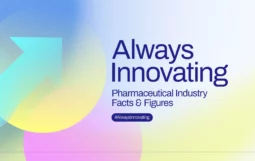The importance of a thriving innovation ecosystem: A look at how Hepatitis C was identified and cured
Innovation often comes in waves, set in motion by science. Such was the case when a cure was found for hepatitis C virus (HCV). It was followed by others in quick succession, giving us multiple tools to successfully tackle the disease.
The story of HCV shows us what a thriving innovation ecosystem can achieve – moving from a debilitating and deadly disease to a cure for patients and the aspiration of disease elimination for the global health community.
What is hepatitis C?
HCV is a viral, blood-borne disease that progresses slowly over time. If left untreated, it can cause life-threatening damage to the liver. It’s the leading cause of liver cancer and the main reason for liver transplantation.
Globally, an estimated 58 million people have HCV, with about 1.5 million new infections occurring per year. HCV transmission most commonly results from the reuse or inadequate sterilization of medical equipment, transfusion of unscreened blood and blood products, and injecting drug use through the sharing of needles or syringes. There are an estimated 3.2 million adolescents and children with chronic HCV. WHO estimated that, in 2019, approximately 290,000 people died from HCV, mostly from cirrhosis and primary liver cancer.
A cure was developed at an incredible pace
The hepatitis C virus was first identified in 1989. In the early 1990s, a few medicines were found that had a modest impact on disease progression for some, but with significant side effects and disappointingly low rates of success. Research to find better, more effective therapies continued. Seventy-seven investigational medicines failed in clinical trials between 1998 and 2014, either because they were too toxic or not effective enough. However, these failed medicines laid the groundwork for 12 approved medicines over the same period.
Direct-acting antivirals can cure more than 95% of patients over a course of eight to 12 weeks
In a landmark moment, a new class of medicines, known as direct-acting antivirals (DAAs), was introduced in 2011. Compared to the first HCV treatment approved in 1991, for which cure rates were around 6%, these first generation DAA regimens substantially increased cure rates. According to the WHO, the latest DAAs today can cure more than 95% of patients over a course of eight to 12 weeks, without the significant side effects of older treatments.
This makes HCV the quickest viral disease ever to be identified and cured. It remains the only chronic viral illness that can be completely cured, allowing millions of people to avoid liver damage, cirrhosis, cancer, transplants, and even the risk of death, so they can regain their health and live well, while also freeing up healthcare system resources.
When innovation thrives, lives are changed
Breakthroughs in scientific understanding of a disease can often unlock even more new ideas and solutions. The competitive nature of the innovation ecosystem means that discoveries build on each other, leading to improved options for patients, such as treatments with better efficacy and reduced side effects. For instance, once scientists began to understand HCV’s life cycle and how it replicates, this set off the waves of innovation that led to today’s DAAs.
While the innovation journey is an unpredictable and risky one, the HCV story shows that a thriving innovation ecosystem has the potential to take us from discovery to cure in just 25 years, which has helped to rapidly transform the lives of millions of people with HCV around the world.
Next step: Elimination of HCV
In light of existing effective treatment options, the WHO has proposed eliminating HCV as a public health threat by 2030, targeting an 80% reduction in new chronic infections and a 65% reduction in mortality from 2015 levels.
According to a recent global model, eliminating HCV would generate $46 billion in cumulative productivity gains and become a cost saving by 2027, with a net economic benefit of $22 billion by 2030.
Countries around the world are now working toward this goal, while overcoming challenges in access to diagnosis and treatment. It is estimated that almost 90% of people living with hepatitis are unaware they even have it. We will need governments and global public health organizations to commit to expanding efforts to diagnosis and make treatment available, so we can help people to access care faster and curb the spread of new infections.
Through determination and collaboration, we can build on the incredible success we’ve had so far and make HCV a thing of the past.
Author






